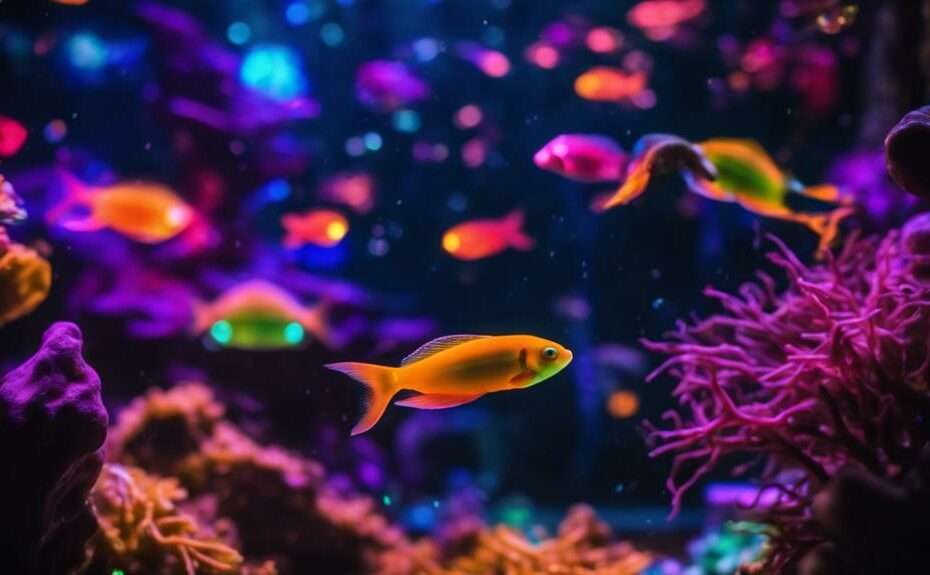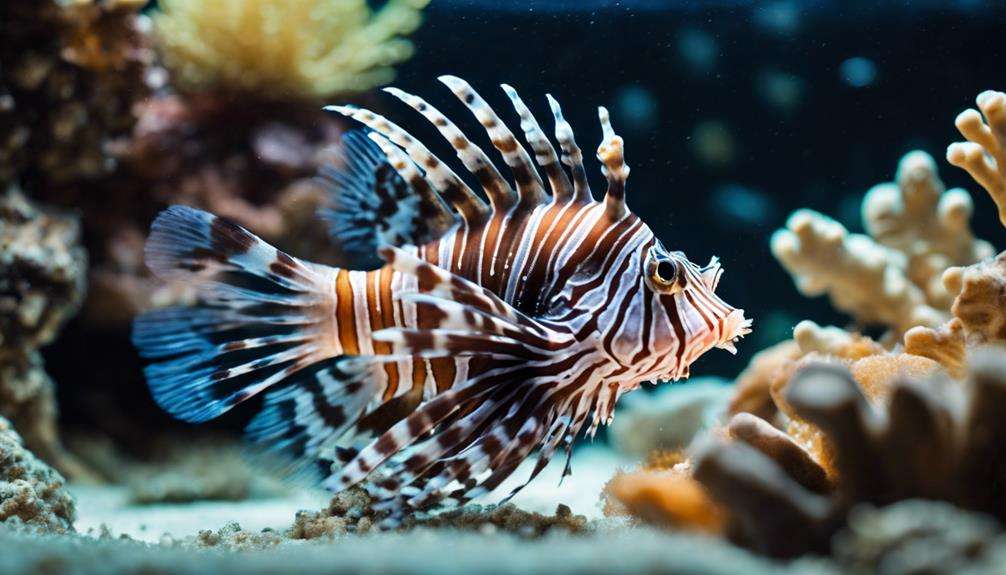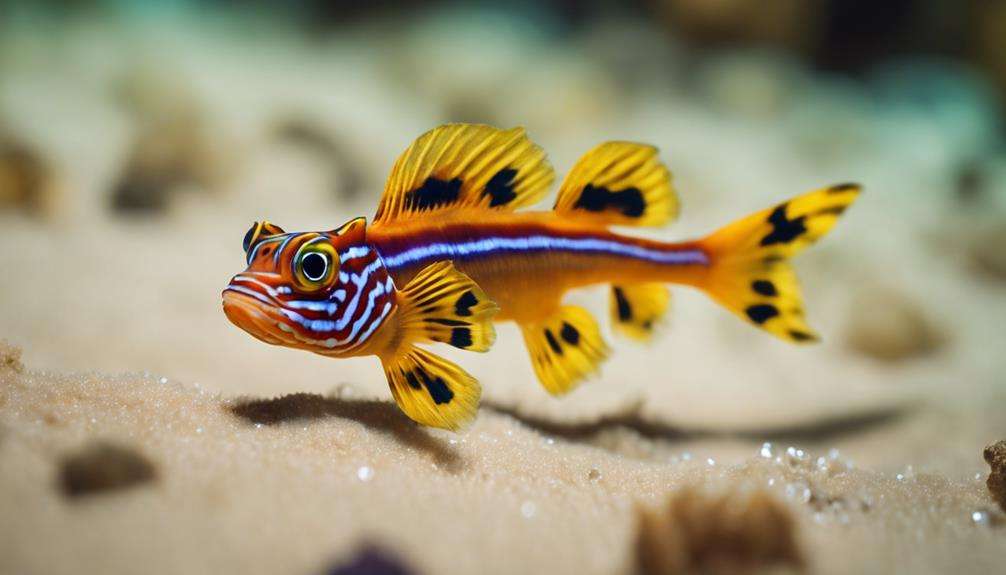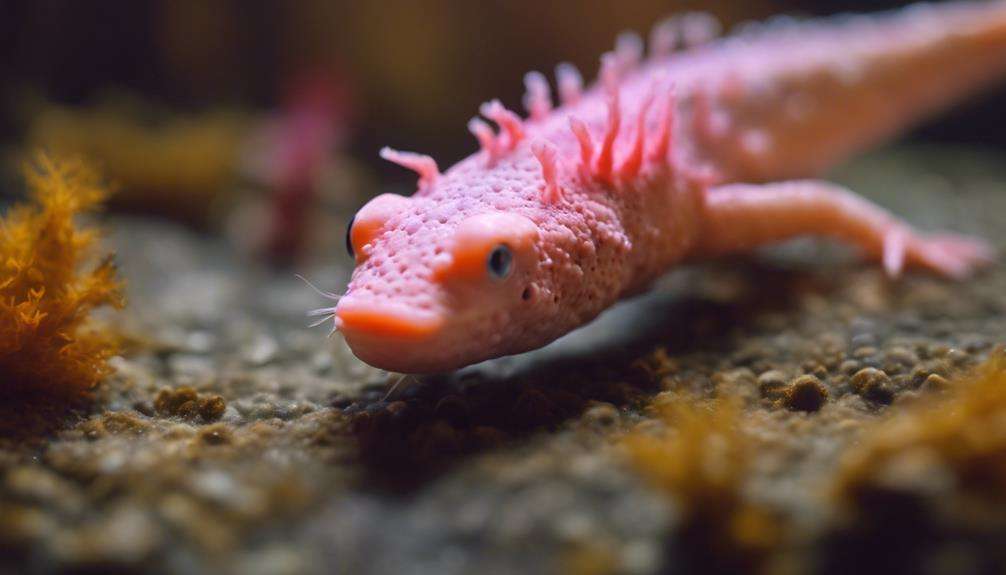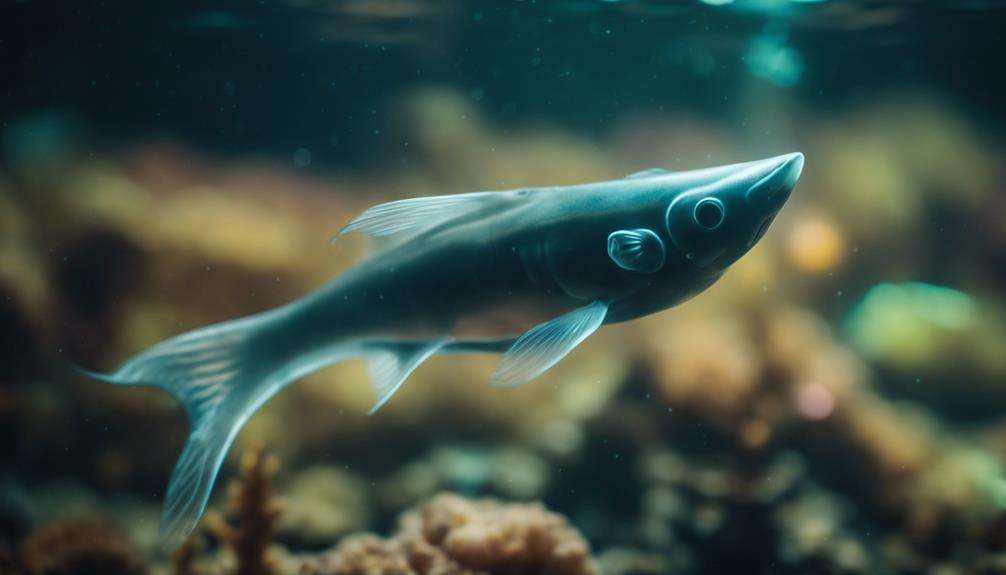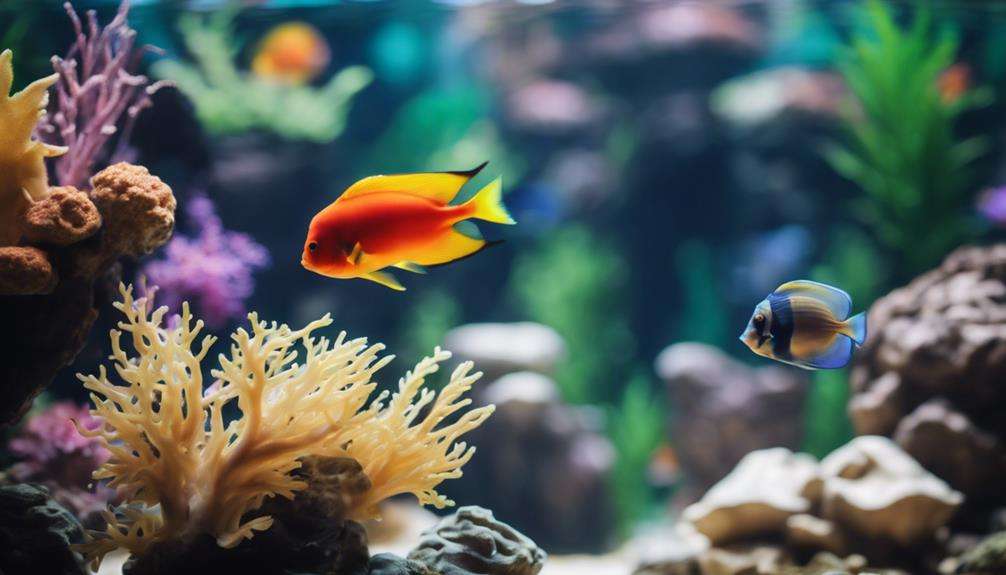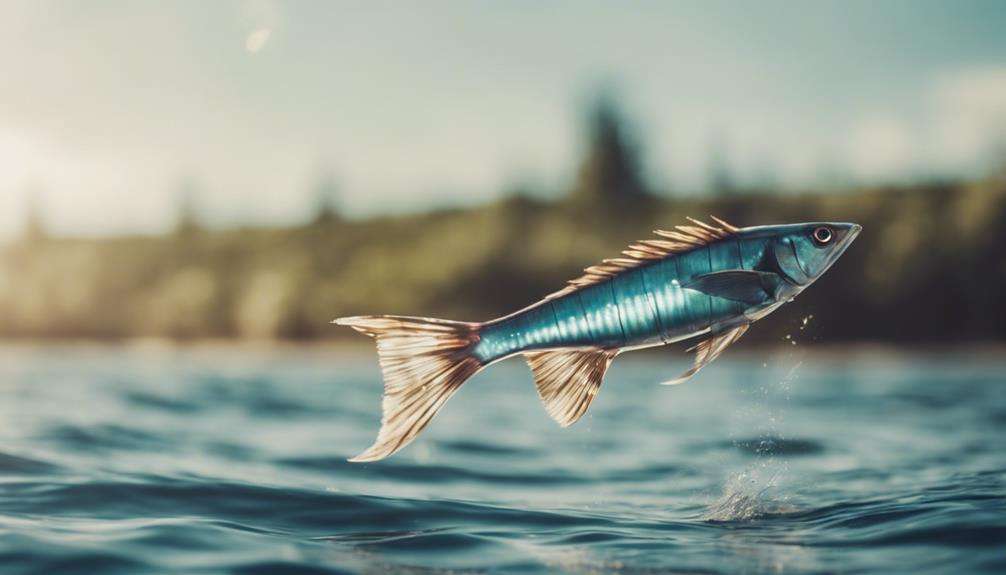Step into the luminescent depths of your aquarium and witness a world where light and life intertwine in captivating ways.
Imagine the subtle glow of bioluminescent fish species gracefully moving through the water, each with its unique charm and mystery waiting to be explored.
As you observe these enchanting creatures, you'll uncover the intricate adaptations that make them truly fascinating additions to your aquatic sanctuary.
Key Takeaways
- Flashlight Fish and Anglerfish showcase bioluminescent features for communication and prey attraction in aquarium settings.
- Lanternfish varieties offer mesmerizing displays of bioluminescence, mimicking deep-sea environments in your aquarium.
- Bioluminescent bacteria create stunning visual effects, enhancing the allure of these unique fish species.
- Deep-sea adaptations in these fish species provide a glimpse into the fascinating world of bioluminescence in your aquarium.
Unique Features of Flashlight Fish
With their distinctive light organs housing luminescent bacteria, flashlight fish exhibit unique features that set them apart from other species in the aquatic world. These light organs, known as photophores, are located beneath each eye and contain bioluminescent bacteria that emit a pale green light. The symbiotic relationship between the fish and the bacteria allows for various functions such as communication, prey visibility, predator confusion, and prey attraction. The bacteria responsible for the bioluminescence in the light organs belong to the Vibrionaceae family, specifically the species Ca. Photodesmus katoptron strain:Akat8.
One of the most intriguing behaviors of flashlight fish is their ability to use their lights for predator confusion. By blinking their lights on and off rapidly, they can disorient potential threats, allowing them to escape and avoid predation. This blink-and-run strategy is crucial for their survival in the wild. Additionally, flashlight fish are known to maintain their bioluminescent lights best at temperatures ranging from 72 to 74 degrees Fahrenheit, ensuring optimal functioning of their light organs.
Glowing Wonders: Lanternfish Varieties
Glowing in the depths of the mesopelagic zone, lanternfish varieties captivate with their bioluminescent displays, illuminating the twilight realm of the ocean. Lanternfish, scientifically known as myctophids, are a diverse group of deep-sea fish found worldwide. These fascinating creatures possess specialized light organs called photophores distributed along their bodies, allowing them to emit light. The bioluminescence in lanternfish serves multiple purposes, including communication among individuals, camouflage from predators below, and attraction of prey.
One remarkable feature of lanternfish is their vertical migrations. These fish undertake daily journeys, ascending to shallower waters at night to feed and descending to deeper waters during the day to avoid predators. This behavior showcases their adaptation to the changing light conditions in the ocean's depths. Some species of lanternfish exhibit this migration pattern, highlighting their unique survival strategies in the challenging environment of the mesopelagic zone. Observing these mesmerizing creatures in an aquarium can offer a glimpse into the mysterious world of deep-sea bioluminescence.
Enchanting Glow of Anglerfish
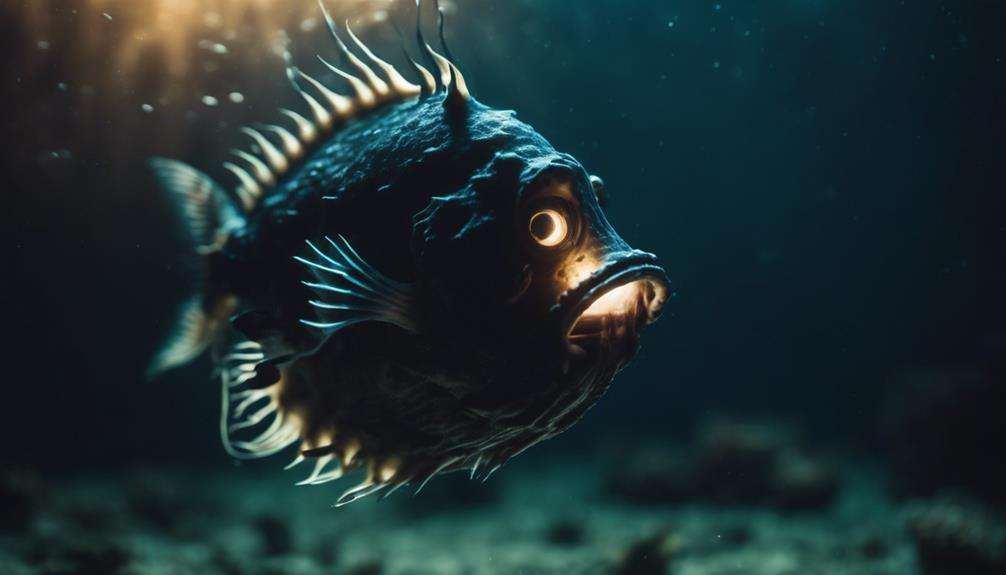
The bioluminescent lure of anglerfish, located on their heads and composed of glowing bacteria, is a remarkable adaptation for attracting prey in the dark depths of the ocean. This lure is a specialized structure that emits light through a process involving symbiotic bacteria. The anglerfish species, such as the Black Seadevil, are renowned for this unique feature, which aids them in hunting efficiently in the deep-sea environment.
The bioluminescent lure of the anglerfish serves as a deceptive mechanism to attract unsuspecting prey towards its mouth. By controlling the intensity and movement of the glowing lure, the anglerfish can mimic the movements of smaller organisms, luring prey within striking distance. This adaptation showcases the anglerfish's remarkable ability to thrive in the challenging conditions of the deep sea, where little to no light penetrates.
Frequently Asked Questions
Why Are Glofish Illegal?
GloFish are illegal due to ethical concerns about genetic modification and potential environmental impact if released. Cultural perceptions and conservation efforts regulate their sale. Originally for scientific research, they sparked debates on GMOs and wildlife protection.
Are There Bioluminescent Freshwater Fish?
Freshwater options for bioluminescent fish are limited but fascinating. Some species like certain catfish and knife fish emit light in dark, deep bioluminescent environments. Their glow serves purposes like communication and camouflage, making them intriguing additions to underwater lighting setups.
Can You Put Bioluminescent Algae in Fish Tank?
Yes, you can put bioluminescent algae in your fish tank. The benefits include enhancing aesthetics and creating a mesmerizing display. Maintenance involves monitoring light levels. Ensure compatibility with your current setup for sustainability. Risks may include overgrowth if not managed properly.
What Fish Glow in Aquarium?
Bioluminescent bettas, glowing guppies, and illuminated tetras are fish that emit light in aquariums. Their unique glow adds a mesmerizing touch to your tank. Proper care, suitable tank conditions, and research on individual needs are crucial for their well-being.
Conclusion
In conclusion, the addition of bioluminescent fish species such as the Sternoptyx obscura, flashlight fish, and pinecone fish to your aquarium can illuminate a world of wonder and fascination.
These creatures, with their ability to emit light in various colors and patterns, create a mesmerizing underwater display that captivates all who observe them.
Like stars in the night sky, these bioluminescent fish species bring a touch of magic and mystery to your aquatic environment.
